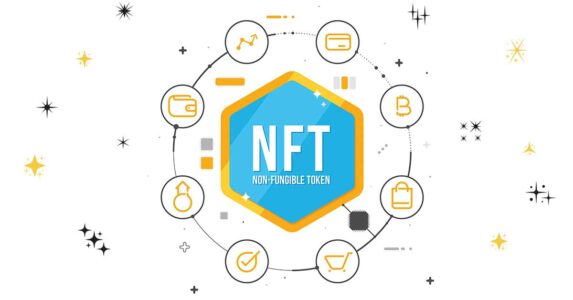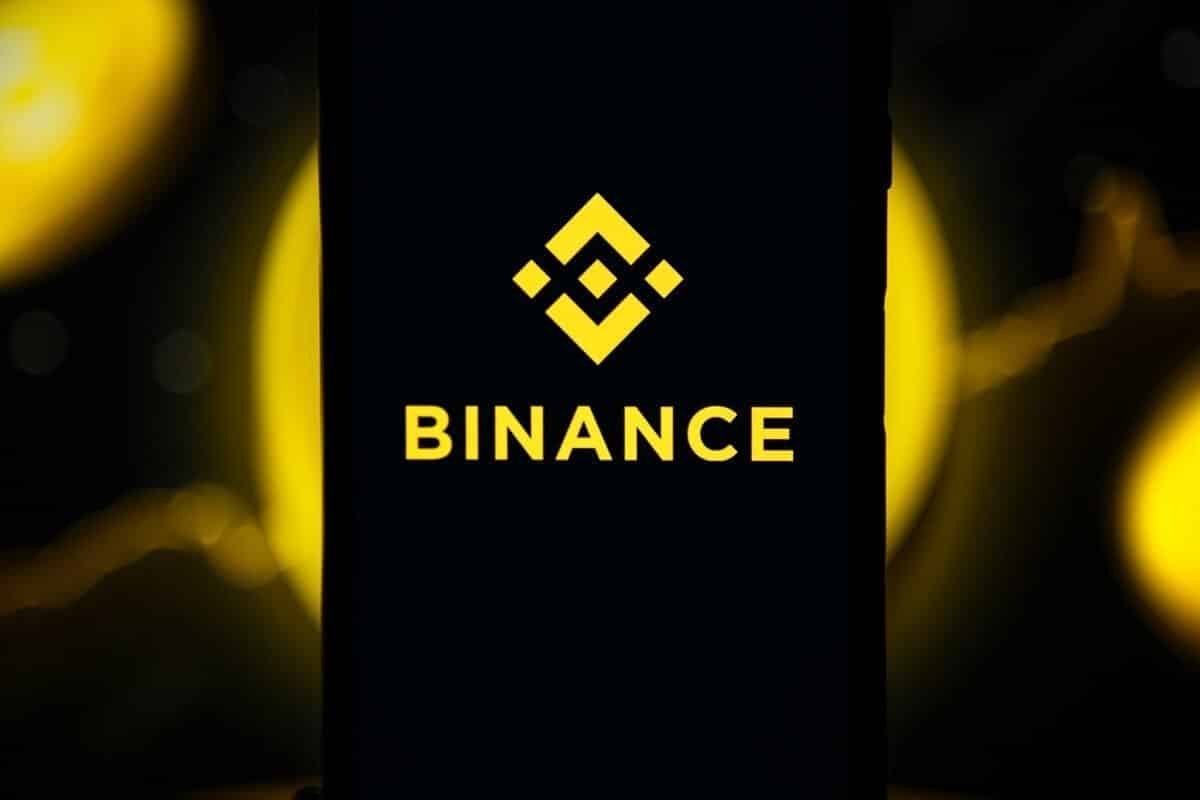NFTs are making waves because some of these unique digital items have been selling for several millions! Do you know what they are? Learn all about them here!

NFTs, The Complete Guide
Do you remember the cool feeling of collecting and trading cards in your childhood? The world of NFTs has taken this unique experience and created a niche in the blockchain. A niche that is becoming ‘trendy’, with million-dollar businesses that make many people dream.
Many questions arise about NFTs. First, what are they? What are they for? How did it take the internet world by storm? Should I participate? All this will be answered in our complete guide to NFTs.
What is an NFT?
NFT stands for “Non-Fungible Token”. They are also known as crypto-collectibles.
Each of these NFTs is a digital asset created on the blockchain. It can be an image, an audio, a video, etc. They are “non-fungible”, so they cannot be spent, consumed, melted down, replaceable, or divisible. They are, therefore, unique and exclusive items.

As with cryptocurrencies, you can buy or sell NFTs in numerous markets without the existence of a central entity controlling or monitoring these transactions. The purchases or sales are often made in cryptocurrencies.
This technology can be used in many fields, such as video games and collectible items, but it is in digital art that it is making big headlines.
NFTs have been around for a few years now, but it’s in the last few months that we’ve seen an explosive interest, with some businesses hitting large thousands in sales. Read on as we’ll talk about a few more below. The global market capitalization of transactions involving NFTs has risen from $40 million, to $338 million by 2020.

Credits: Statista
Understand some of the characteristics that NFTs have that allow them to have value:
- Unique
- Rare
- Indivisible
- Verifiable
- Indestructible
- Transferable
To understand the investment-level potential that NFTs have, you have to free yourself from the ‘ties’ of a more traditional type of economy. Since this portrays digital items, and we’re talking about a digital economy, you might think it’s a kid’s business, but the reality is that this is a pretty serious thing for a lot of artists out there, or anyone looking to make investments.
And to make that easier, let’s try to make a comparison with reality.
In the “real world”, if you are producing or trading art, a certificate of authenticity is essential. This certificate includes, among others, the name of the artist, the title, the dimensions, the year it was finished, etc. and is meant to guarantee the legitimacy of the piece of art.
In the case of NFTs, this is done directly on the blockchain, with cryptography and decentralization making it impossible to tamper or falsify the guarantee of an NFT’s provenance.

As with cryptocurrencies, the authenticity of NFTs comes from the number of miners who do the verification and keep the system honest and transparent.
The entire list of characteristics and the proof of ownership are confirmed through a smart contract. A smart contract is simply a script of code that contains internal memory. When one of these scripts is executed, a transaction is stored. It’s a simple thing, but smart contracts and the blockchain they run on are two premises that are absolutely essential for NFTs to exist.
I draw attention to a detail that many people confuse when they think that the NFT itself is stored in the blockchain, when in fact what is recorded and stored immutably in the blockchain is the transaction. This transaction indicates the existence of the object, its ownership and characteristics, but not the object itself.
NFTs vs. Cryptocurrencies
Let’s draw a short comparison between an NFT and a cryptocurrency, Bitcoin, for example.
Although both are run on the blockchain, Bitcoin is a castable item, because you can divide it into units, where each one has the same value. You know this because each Bitocoin that exists on the market has the same value as another Bitcoin.
But an NFT that is an image of a cat, for example, is a token, a “digital object” that is unique and unrepeatable. It is not possible to split that image.
What can an NFT be?
NFTs can take lots of forms, they can be images, gifs, audios, game cards, digital terrain, etc. To date, several use cases are using Non-Fungible Tokens, such as video games, digital identity, licensing, fine art, and high value items.
And I might add that many famous people have already gotten into this craze and produced their NFTs: Diplo, Péle, Tony Hawk, Deadmau5, Lebron James, Grimes, Flume, Snoop Dogg, Lionel Richie, Lindsay Lohan and William Shatner, among many others.
Records of some NFTs:
The “fad” for NFTs has blown up recently after some record-breaking deals.
The classic gif meme Nyan Cat was sold for $580,000.
Another meme that is several years old and also broke the $500,000 mark was the “Disaster Girl”.

Jack Dorsey, the CEO of Twitter, also decided to enter this world and he did it through the big door when he sold his first ever tweet, posted in March 2006. For many just another post among millions, for others an immortalized and unrepeatable piece of history, the truth is that this NFT earned almost $3 million.
A digital work inspired by the Bitcoin code sold for $130,000.
Without a doubt, one of the deals that generated the most conversation was a collage by an author named Beeple. The work, “Everydays – The First 5000 Days” went up for auction at the reputable Christies and sold for a whopping $69 million, yes you read that right, $69 million.
This artist, who until now was almost unknown in the art world, with this sale, immediately jumped into the top 3 most valuable living artists in the world. You can see the work in all its splendor here.

Credit: Beeple
How do NFTs work?
The creation and issuance of NFts happens on the blockchain. This activity is called ‘minting’. The most important format today is ERC-721, a standard that runs on the Ethereum blockchain network.
But there are many others and they can be much cheaper to create your art. Let’s be honest, having to create your artwork can be quite costly, but we will get to that in a moment.
It is important to know that there are several other blockchains that may have better conditions for you to create and sell your art, among them:
- Binance Smart Chain
- Tron
- Flow
- EOS
- WAX
In terms of markets to buy and sell, there are many such as OpenSea, SuperRare, Foundation or Rarible. It is in these marketplaces that you will buy and sell the NFTs, not all of them accept all types of NFTs as they are bound to a standard type.

Binance itself, considered one of the biggest platforms today is also planning to make its entry into the world of NFTs, through a dedicated marketplace for NFTs. It will launch in June 2021 and promises to bring together artists, content creators and enthusiasts in the cryptocurrency world. One of the ‘promises’ is low commissions, this which is one of the biggest points of criticism.
Steps to create and put your NFT for sale, through the Ethereum blockchain network:
1 – Creating a wallet, or digital wallet, for your funds. This step is the first, because without a wallet you cannot have your funds. There are several good solutions, we can suggest Binance. It is clearly one of the companies with the most solid name on the market, full of features and security on the market.
The choice of your wallet should consider an access to the markets for buying and selling NFTs. In the case of Binance, you will have the advantage of perfect access to the market we mentioned in the previous point.
2 – Buy Ethereum, if you don’t have it. More specifically Ether which is the currency that ‘powers’ the Ethereum platform. Or if you prefer, exchange another crypto you have. You can also choose not to buy and continue anyway, but you won’t be able to sell your NFT. The old maxim of “you have to spend money to make money” is very present here.
3 – Once you have Ethereum available, take or create your art. As you already know, it could be audio, video, virtual reality, still images, looped (gif) images, slow-motion images, etc. Within the marketplace you choose you will import your file. In this example we will talk about the OpenSea marketplace, but you choose whichever you prefer. Click “create” and you need to log in and associate your portfolio. You will see that your collection is empty. Let’s add some items.

4 – When creating your first collection, first you choose a logo and collection name. Please note this is not yet the time to upload your NFT art. It is just the name of the collection where your NFT item(s) will be. After the collection is created, you can upload your art. Give it a name, a description, you can attach a link – to your Twitter, for example – and hit create. There your NFT is uploaded and there is a hash that identifies it as yours.
The NFT can be shared and is visible for everyone to see, you will even see it inside your wallet. However, it is not yet being sold. To put it up for sale you need to click sell.
5 – By pressing sell, you will set the price. You can choose to make a bundle, or create an auction, or make a single sale with a defined price. The price will be set in ETH (Ethereum). Next come the commissions. And that’s where it gets pricey…
The OpenSea marketplace will not charge any commission for putting an item up for sale, but it will charge 2.5% of the total price of a sale made. But we don’t stop there. When you click the post your listing button, OpenSea will indicate that you need to initialize your account by making an initial transaction. When you do this you need to authorize it in your wallet and the miner fee, which is the same as the gas fee, will appear.
Recent reports show that it is very easy for this fee to hit $200, which gets very complicated for someone who is just trying to create art to sell. Without knowing if you will ever sell any pieces, you are already incurring high costs.
Gas fee is a cost, used to pay for the transactions that take place on the Ethereum blockchain network. The price is dynamic, it varies greatly depending on what needs to be processed and how congested the network is.
If you want to proceed you will see your item listed for sale. Done! You are now an NFT artist and good luck with your sales.
But if you don’t want to use the Ethereum blockchain for your NFTs, you can choose others that can be considerably cheaper. We chose the step-by-step guide on the Ethereum network simply because it has the largest community.
Hint, try doing the same step-by-step, but opt for the WAX blockchain, via the WAX wallet, you will get a pleasant surprise in costs and commissions.
Why am I going to pay so much for something I can watch online for free?
Sure, that question may make sense. But it shows that maybe you are still ‘stuck’ on the idea that this is all a meaningless joke. How can such a thing have value, right? The answer is simple, like so many other things in this life, the value is not in the object itself, but is assigned by the people who consider it valuable. The values of these digital items depend on how much people want to give for it and whether it is rare or not.
And this happens with both digital collectibles, or real, tangible items, such as Nirvana’s Kurt Cobain’s worn and soiled cardigan that sold for over $300,000 in 2019.

Or the steel rabbit created in 1986 by Jeff Koons which is the most expensive piece of art in history, created by a still living author, was sold for over $90 million dollars.
Or the rare Superman comic book that was released in 1938 and sold for over $3 million.
NFT allows, as in the examples cited above, the buyer to own the only existing unit (the rest are copies with no commercial value), with an unalterable authentication that serves as proof of ownership. And this also gives the holder the ‘right’ to brag and boast to the whole world that he is its sole owner. And for many, this has a unique flavor and they are happy to pay such sums for this right.
Famous projects using NFTs and a digital economy:
– CryptoKitties
One of the first projects with Non-Fungible Tokens. Game built on the Ethereum blockchain that allows players to collect, create and trade virtual cats.
It became especially famous in February 2020 after being the main cause of a network jam. These digital cats continue to make several million circulating and some of the rarer units have sold for a few hundred thousand dollars.

– Decentraland
This world is ideal for those who want a decentralized piece of land and within Virtual Reality. You here buy and sell pieces of virtual land and other NFTs. If you own a plot, you can build whatever you like. And naturally many buy with the intention of reselling for a good profit later. And this is the direction, with the average amount paid for each lot more than quadrupling in just 1 year. One of the record sales to date was a lot that sold for $1.5 million.
– Alien Worlds
– Another virtual world that explores a digital economy, around a video game where you mine a token called TLM. In Alien Worlds everything ends up being an NFT, be it the tools to mine, your characters, the place where you mine, etc. Certain NFTs cards that are on the market already have an asking price of over $5 million.
– Sorare
What is the world’s king sport? It is soccer, without much doubt. So it is perfectly natural that there is a game that replicates a collection of stickers with the best players in the world. With official licenses from clubs like Real Madrid, Liverpool, PSG, among others, it has grown immensely on the Ethereum platform. Each player has 3 levels of rarity, with 100 cards of each player at the rare level, 10 at the super rare level, and only 1 at the unique level. These are the cards that have a circulation limit and the ones that reach high values on the market.

The future of NFTs?
When something is still giving its first steps, it gets complicated to understand what will happen in the next few years. But there are some data that allow us to understand which path this market is taking.
According to current figures, some analysts anticipate that this market will exceed $1.3 trillion by the end of 2021.
Several brands, artists and sportsmen will follow the examples of those that already exist (Taco Bell, Louis Vuitton, Nike, Samsung) and enter this ‘craze’, experiencing the NFT world for the first time. And inevitably, many will enter the world of cryptocurrencies through the door of NFTs.
In the opinion of some digital art creators and buyers, we are witnessing a new chapter in the history of Art. No doubt this unlocks new ways to generate profit to the areas of art, video games, technology, sports, and more.

But there are also some who argue that this is a super-inflationary, highly speculative and dangerous “bubble” that could burst and leave many in huge losses.
However, and should this happen, the truth is that, like the blockchain itself, the phenomenon of NFTs will not disappear. It will, perhaps, consolidate, mature, and start to become part of the mainstream.
We are of the opinion that this is still just the beginning and there will be many more cases in the future. It is possible that NFTs, even under a new name, will become part of our everyday life and people will use them frequently. We will be here to watch the next chapters.





